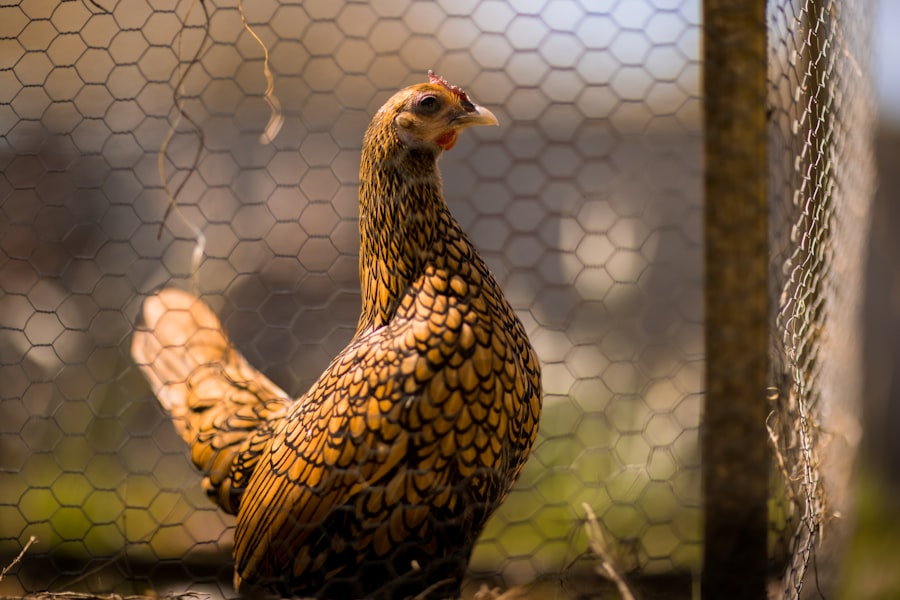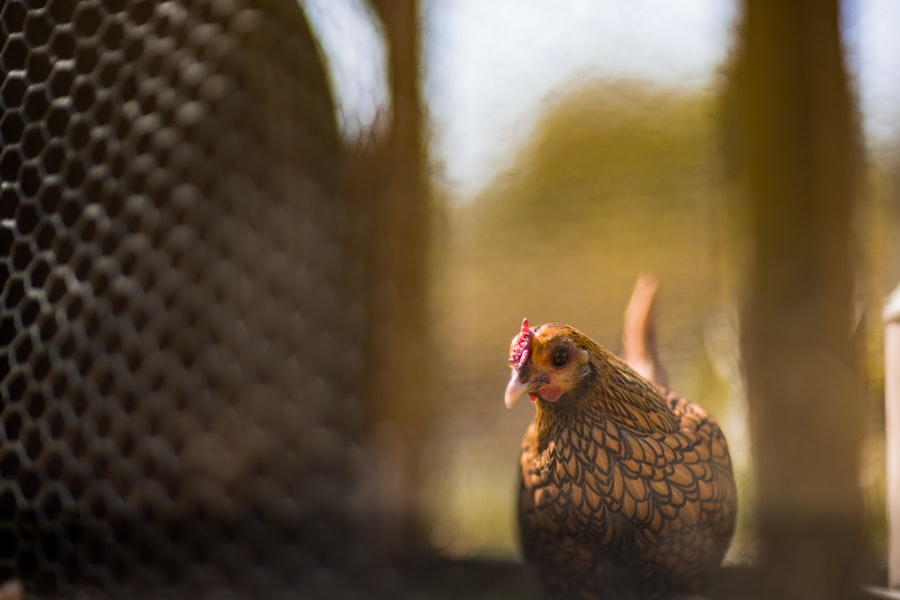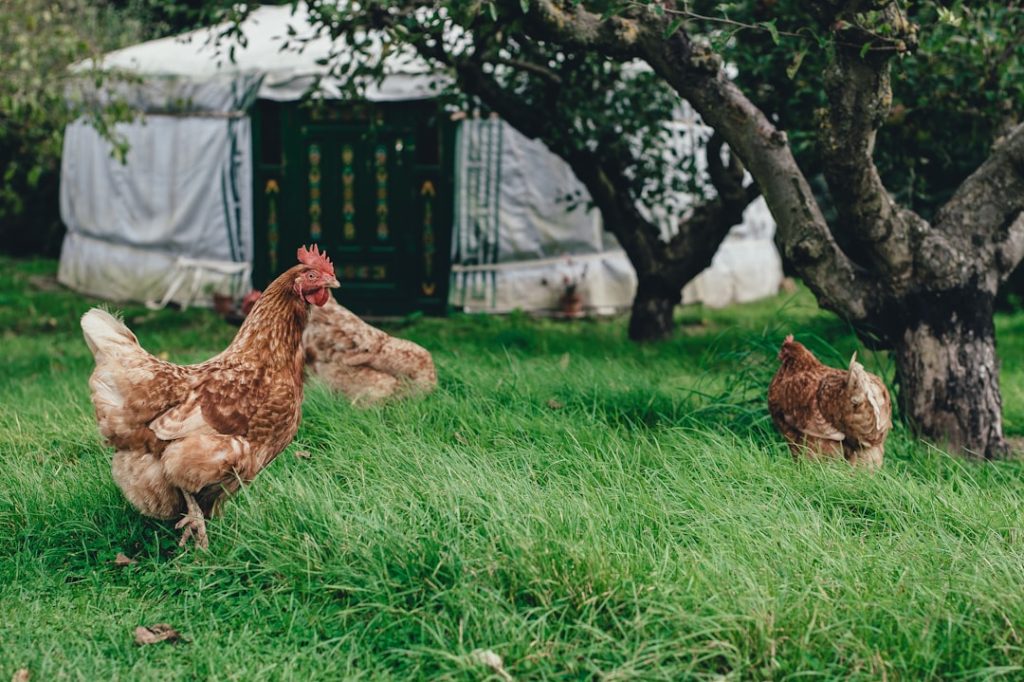Chicken head stability is a critical component of their overall health and functionality. The capacity to maintain a stable head and neck position is vital for chickens’ survival, enabling them to perform essential activities like eating, drinking, and remaining alert to their environment. This article examines the complex mechanisms that allow chickens to achieve head stability, including the anatomical structure of their neck and head, the function of muscles and nerves, environmental influences on stability, and the significance of head stability for chicken health and welfare.
Table of Contents
- 1 The Anatomy of a Chicken’s Neck and Head
- 2 How Chickens Use Their Senses to Maintain Head Stability
- 3 The Role of Muscles and Nerves in Chicken Head Stability
- 4 Environmental Factors Affecting Chicken Head Stability
- 5 Common Behaviors and Movements That Demonstrate Chicken Head Stability
- 6 The Importance of Head Stability for Chicken Health and Well-being
- 7 FAQs
Key Takeaways
- Chicken head stability is crucial for their overall health and well-being, as it allows them to maintain balance and perform essential behaviors.
- Understanding the anatomy of a chicken’s neck and head is important in comprehending how they maintain head stability.
- Chickens use their senses, particularly their vision and vestibular system, to maintain head stability and navigate their environment.
- Muscles and nerves play a significant role in supporting and controlling chicken head stability.
- Environmental factors such as uneven terrain and weather conditions can impact chicken head stability and overall health.
The Anatomy of a Chicken’s Neck and Head
The Flexible Neck
The neck of a chicken is composed of seven cervical vertebrae, which are relatively long and flexible compared to other bird species. This flexibility allows chickens to move their heads in a wide range of directions, essential for maintaining stability and awareness of their surroundings.
Supporting the Head
The muscles and ligaments surrounding the cervical vertebrae play a crucial role in supporting the head and maintaining stability. Additionally, the skull of a chicken is relatively lightweight, with air sacs within the skull providing further support and cushioning for the brain. The combination of these anatomical features allows chickens to maintain head stability while performing essential tasks such as pecking for food, drinking water, and scanning their environment for potential threats.
Sensory Organs and Stability
The sensory organs located in a chicken’s head also contribute to their ability to maintain stability. Chickens have well-developed eyes with a wide field of vision, allowing them to detect predators and other potential dangers from various angles. Their eyes are also capable of rapid movements, enabling them to focus on specific objects or prey. Additionally, chickens have a highly developed sense of hearing, with ear canals that allow them to detect subtle sounds in their environment. These sensory abilities play a crucial role in helping chickens maintain head stability by allowing them to remain aware of their surroundings and respond to potential threats or opportunities for feeding.
How Chickens Use Their Senses to Maintain Head Stability

Chickens rely on their senses to maintain head stability and navigate their environment effectively. Their well-developed eyes provide them with a wide field of vision, allowing them to detect potential threats or sources of food from various angles. This visual acuity enables chickens to maintain stability in their head movements while scanning their surroundings for predators or opportunities for feeding.
Additionally, chickens have a highly developed sense of hearing, which allows them to detect subtle sounds in their environment. This auditory awareness contributes to their ability to maintain head stability by alerting them to potential dangers or sources of food. Chickens also use their sense of touch to maintain head stability.
The tactile receptors in their beaks and facial skin provide them with information about the texture and temperature of objects they come into contact with. This tactile feedback helps chickens maintain stability in their head movements while pecking for food or exploring their environment. Furthermore, chickens have a well-developed sense of balance, which is essential for maintaining head stability while moving and navigating uneven terrain.
Their ability to maintain equilibrium contributes to their overall head stability and functionality in various environments.
The Role of Muscles and Nerves in Chicken Head Stability
The muscles and nerves in a chicken’s neck play a crucial role in maintaining head stability and functionality. The cervical vertebrae are supported by a complex network of muscles and ligaments that enable chickens to move their heads in a wide range of directions while maintaining stability. The muscles surrounding the cervical vertebrae provide support and control for the movements of the head, allowing chickens to peck for food, drink water, and scan their environment with precision.
Additionally, the nerves that innervate these muscles play a crucial role in coordinating head movements and maintaining stability. The vestibular system, located within the inner ear, also plays a significant role in chicken head stability. This sensory system provides information about the position and movement of the head, enabling chickens to maintain equilibrium and stability while navigating their environment.
The vestibular system works in conjunction with the muscles and nerves in the neck to coordinate head movements and maintain stability. Together, these anatomical structures and physiological mechanisms enable chickens to maintain head stability and functionality in various environments.
Environmental Factors Affecting Chicken Head Stability
Several environmental factors can affect chicken head stability, including the quality of the ground surface, temperature, and the presence of potential predators or stressors. Uneven or slippery ground surfaces can challenge a chicken’s ability to maintain head stability while moving and pecking for food. Additionally, extreme temperatures can impact a chicken’s overall well-being, potentially affecting their ability to maintain stability in their head movements.
High levels of stress or the presence of predators can also impact a chicken’s ability to maintain head stability, as they may become hyper-vigilant or exhibit erratic movements in response to perceived threats. The availability of food and water can also influence a chicken’s ability to maintain head stability. Access to high-quality feed and clean water is essential for supporting the overall health and functionality of chickens, including their ability to maintain stability in their head movements.
Furthermore, environmental enrichment such as perches, dust baths, and other forms of stimulation can contribute to a chicken’s overall well-being and ability to maintain head stability. Providing chickens with a safe and enriching environment is essential for supporting their natural behaviors and ensuring they can maintain stability in their head movements.
Common Behaviors and Movements That Demonstrate Chicken Head Stability

Feeding and Drinking Behaviors
When pecking for food, chickens display precise and controlled movements of the head and neck, allowing them to target small objects with accuracy. Additionally, when drinking water, chickens demonstrate stable head movements as they tilt their heads back to swallow.
Chickens also exhibit stable head movements while engaging in social interactions with other flock members. They use subtle head movements and body language to communicate with one another, demonstrating their ability to maintain stability while engaging in complex social behaviors.
Furthermore, when navigating their environment, chickens display stable head movements as they scan for potential threats or sources of food. These behaviors highlight the importance of head stability for chickens’ overall functionality and well-being in various contexts.
The Importance of Head Stability for Chicken Health and Well-being
Head stability is essential for supporting the overall health and well-being of chickens. The ability to maintain stable head movements enables chickens to perform essential tasks such as feeding, drinking, socializing, and remaining aware of potential threats in their environment. Additionally, head stability contributes to chickens’ overall functionality and quality of life by allowing them to navigate various terrains with precision and confidence.
Furthermore, maintaining head stability is crucial for preventing injuries and supporting the overall musculoskeletal health of chickens. Stable head movements reduce the risk of strain or injury to the neck muscles and cervical vertebrae, ensuring that chickens can move comfortably and efficiently in their environment. Overall, head stability plays a vital role in supporting the natural behaviors and well-being of chickens, highlighting its significance for their overall health and functionality.
In conclusion, chicken head stability is a complex and essential aspect of their overall well-being and functionality. The intricate mechanisms that enable chickens to maintain stable head movements involve the anatomy of their neck and head, the role of muscles and nerves, environmental factors affecting stability, common behaviors that demonstrate stability, and the importance of head stability for chicken health and well-being. Understanding these mechanisms is crucial for supporting the natural behaviors and well-being of chickens in various environments.
If you’re interested in learning more about poultry, you might want to check out this article on how many eggs geese lay. It’s always fascinating to learn about the different behaviors and habits of various poultry species.
FAQs
What is the purpose of a chicken keeping its head stable?
Chickens keep their heads stable in order to maintain their balance and focus on their surroundings. This stability helps them to navigate their environment and locate food and potential threats.
How do chickens keep their heads stable?
Chickens have a specialized neck structure that allows them to keep their heads stable while moving. This includes a system of muscles, tendons, and ligaments that work together to maintain stability.
Why is it important for chickens to keep their heads stable?
Keeping their heads stable is important for chickens to accurately peck at food, maintain balance while walking or running, and keep a lookout for predators. It also helps them to maintain their overall coordination and agility.
Do all chicken breeds have the same ability to keep their heads stable?
Yes, all chicken breeds have the same basic ability to keep their heads stable. However, there may be slight variations in the specific neck structure and muscle development among different breeds.
Meet Walter, the feathered-friend fanatic of Florida! Nestled in the sunshine state, Walter struts through life with his feathered companions, clucking his way to happiness. With a coop that’s fancier than a five-star hotel, he’s the Don Juan of the chicken world. When he’s not teaching his hens to do the cha-cha, you’ll find him in a heated debate with his prized rooster, Sir Clucks-a-Lot. Walter’s poultry passion is no yolk; he’s the sunny-side-up guy you never knew you needed in your flock of friends!







